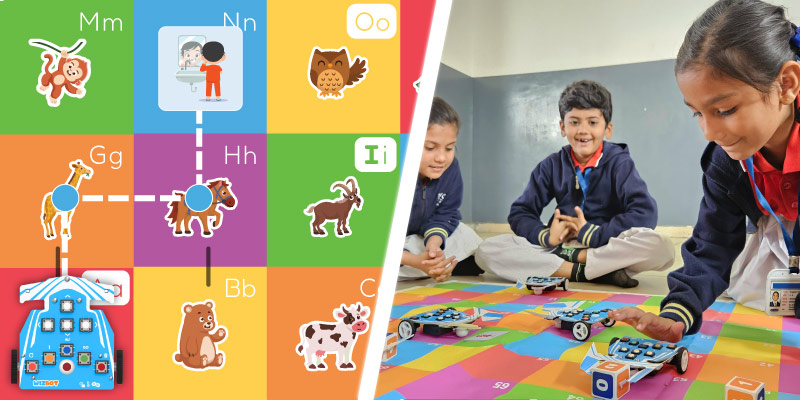When was the last time you decided to lose that fat and be a lean, fit personality? Maybe not too far off in the recent past! When something instigates motivational behavior into us, a very basic framework of certain activities from the human mind begins. We tend to be motivated because of certain impulses in our mind, which are termed as impulses or arousals in various psychological models of motivation.
Let’s take an example. The act of being hungry is an instinct (or arousal or impulse) of human behavior. You getting up from your place is an act towards that goal which arises due to the motivation of hunger. When you walk towards the fridge to get something to eat, you’re met by your sibling who is also hungry and desires the same piece of cake you are after. This is not only an obstacle in your motivated endeavor to get something to eat, but is also a competition of sorts with a peer. You can either quit here or overpower your sibling and get that scrumptious Red Velvet Cake. This depends on the intensity of the arousal in your mind (and, if you may, how annoying your sibling is). If you overcome the competition and get to your goal, you are rewarded, else you are not; because siblings don’t always share food.

That right there, my friends, is how the basic framework of motivational behavior in psychology. The instinct’s very arousal and its presence in the human’s mind are yet subject to more models. It can be either due to extrinsic or intrinsic factors, depending on the person at hand.
So why so much of geek talk, you may ask. These frameworks are missing today in many walks of life. Turns out they are either extremely weak or completely missing in schools!
What Is the Scenario Out There?
Not good, fellas. Growing distress among students when it comes to being able to patiently solve problems and meet them head-on is consistently rising. Substantial rewards, in terms of the motivation model explained above, are outright missing. Only students who do well in academics with straight A’s get a filling reward while those who aren’t able to perform as good are completely missed out.
Another problem is that of intensity towards the goal of learning. Students’ intensity towards sticking to the goal is weakened by many factors (one of them being a lack of reward or incentives).
The problem is darker than it seems and needs to be addressed with a stronger drive towards creating an environment to create better human resources altogether. But how can we do that?
Motivational Theories That CAN Change Things
-
Cognitive Dissonance
Cognitive dissonance occurs when there is an unresolved conflict in our mind between two perceptions we hold about a given subject. Simply put, the teacher can create conflict in the students’ mind among their old and new thoughts. This conflict used in many “transformative” programs which proves it to be a strong motivator.

One such way to do this is either by first learning the students’ beliefs about the topic or by inducing beliefs about it. Then, create a conscious conflict about it in their minds. For example, the ideal way to teach the atomic structure to students is to start from the easiest models. When they learn about JJ Thompson’s model, they easily agree to it. But when they’re taught something about the alpha particle scattering experiment, things seem a lot more “hairy” and conflict is established in their minds. This conflict drives them to reach a solution because a belief they held has strongly been rejected. Experiments can prove very strong contenders here and that is where STEM and its power lies.
You May Also Like: STEM — The What, The Why, and The How
-
Cognitive Evaluation Theory
We assess every task in terms of how well it makes us feel competent and in control. We are intrinsically motivated by tasks we believe fall in our comfort zone and ‘put off’ those which we deem out of it. This issue is often about self-perception of one’s levels of competency.

STEM enables students to do this by experiencing the phenomenon and letting them control their environment. E.g., it might be difficult to visualize how the inverse square laws function when it comes to many laws of force. But letting them experience the flexibility of physics by being in control enables them to understand better and attribute all calculation-based errors to themselves.
-
Intrinsic and Extrinsic Motivation
Intrinsic motivation is the desire to do things because we enjoy doing them (i.e, action motivated behavior); it is a stronger motivator than Extrinsic motivation (i.e., reward-motivated behavior).
An important factor leading to Intrinsic Motivation creation is providing learners with the opportunity to develop effectance. Effectance refers to being successful at what we do and occurs when the learner succeeds at a task which is perceived as challenging but within the stretch of the learner’s ability.

We need to create very interesting and well thought out lessons to create proper effectance. And STEM is almost synonymous to it. It can help foster teamwork, give the right kind of difficulty setting and enables the student to succeed.
You May Also Like: How STEMpedia Is Transforming Today’s Youth into Tomorrow’s Innovators
In a Nutshell
Motivation is a much-talked subject but is something that we miss out upon when it comes to proper modeling and implementation. STEMpedia’s dedication to motivating students is everlasting and is well fostered based on the detailed theories talked about in the previous sections. Student control, reward, and effectance are all taken care of and bring the best in students’ academia.
Feature image taken from rawpixel.com








